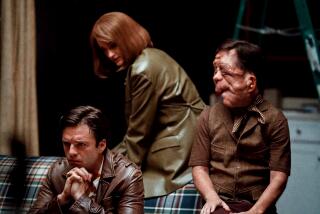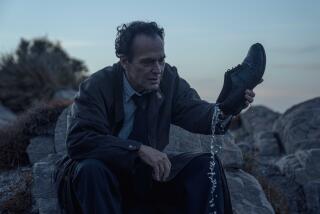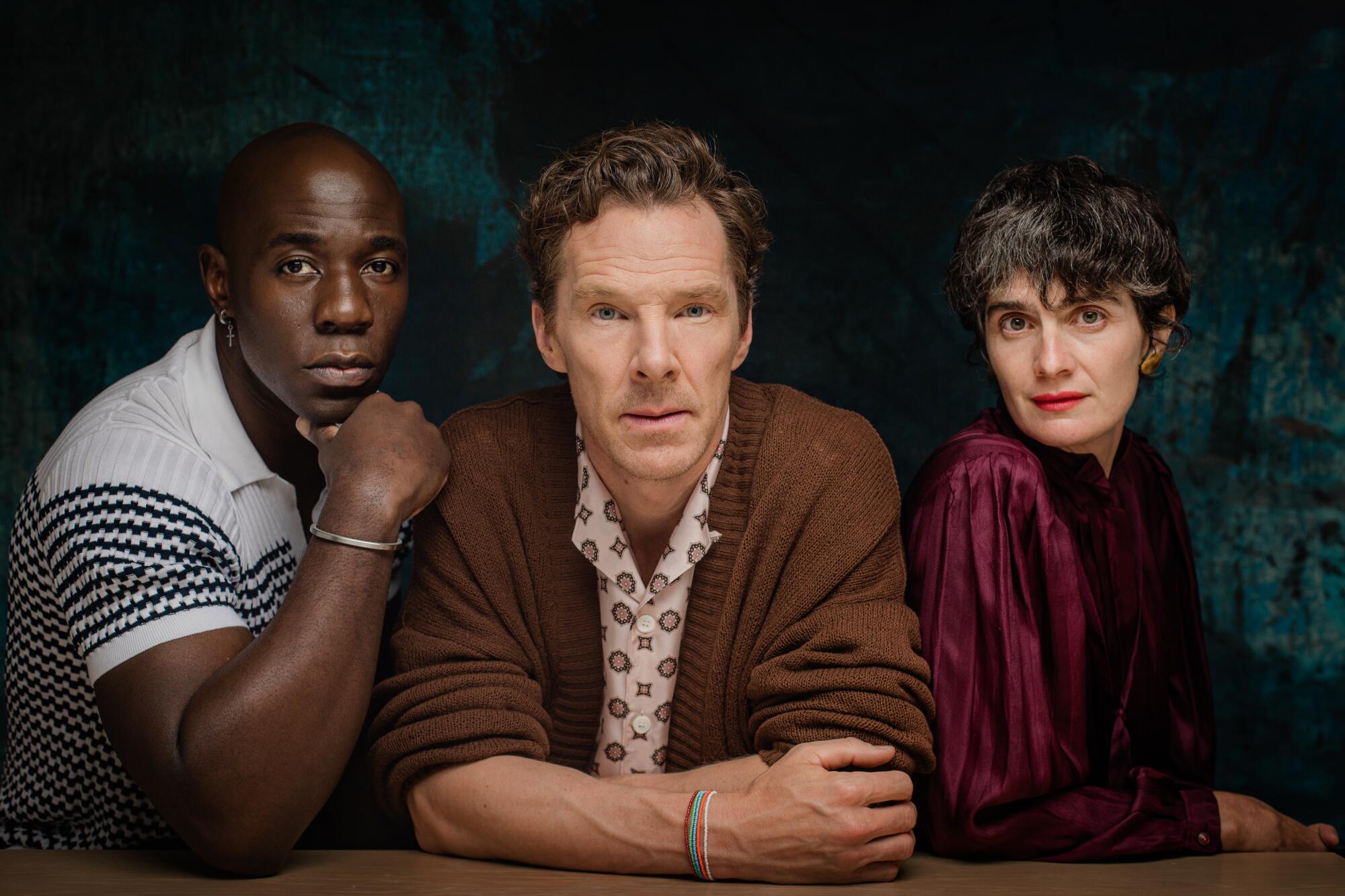
The most idiosyncratic and striking moment on TV this summer? It could be Benedict Cumberbatch as a father running through the streets of New York in a giant, fuzzy blue monster puppet getup amid a desperate attempt to reconnect with his son.
It may sound like some sweet magical adventure, but that’s not the style of British screenwriter Abi Morgan, who created “Eric” for Netflix. She isn’t afraid to tackle big subjects and her body of work — including “Shame” (2011), which tackles sex addiction; “Suffragette” (2015), about women’s suffrage in the U.K.; and TV dramas “The Hour” and “The Split” — often leaves viewers emotionally strung out in its intense examination of human behavior, internal battles and broken systems. And “Eric” is just as visceral.
Set in 1980s New York City, the initial episode of the limited series finds Cumberbatch’s Vincent Anderson, a puppeteer and creator of a “Sesame Street”-esque children’s show “Good Day Sunshine,” exasperated by work demands and his floundering marriage to Cassie (Gaby Hoffmann). The couple’s troubles intensify when their 9-year old son, Edgar (Ivan Howe), goes missing on his walk to school. Torn up by guilt, Vincent is convinced if he turns his son’s drawing of a blue monster, Eric, into a life-size puppet on TV, Edgar will come home. And tasked with investigating the boy’s disappearance is Michael Ledroit (McKinley Belcher III), a Black and queer detective whose closeted identity becomes an obstacle at work as he pursues the case.
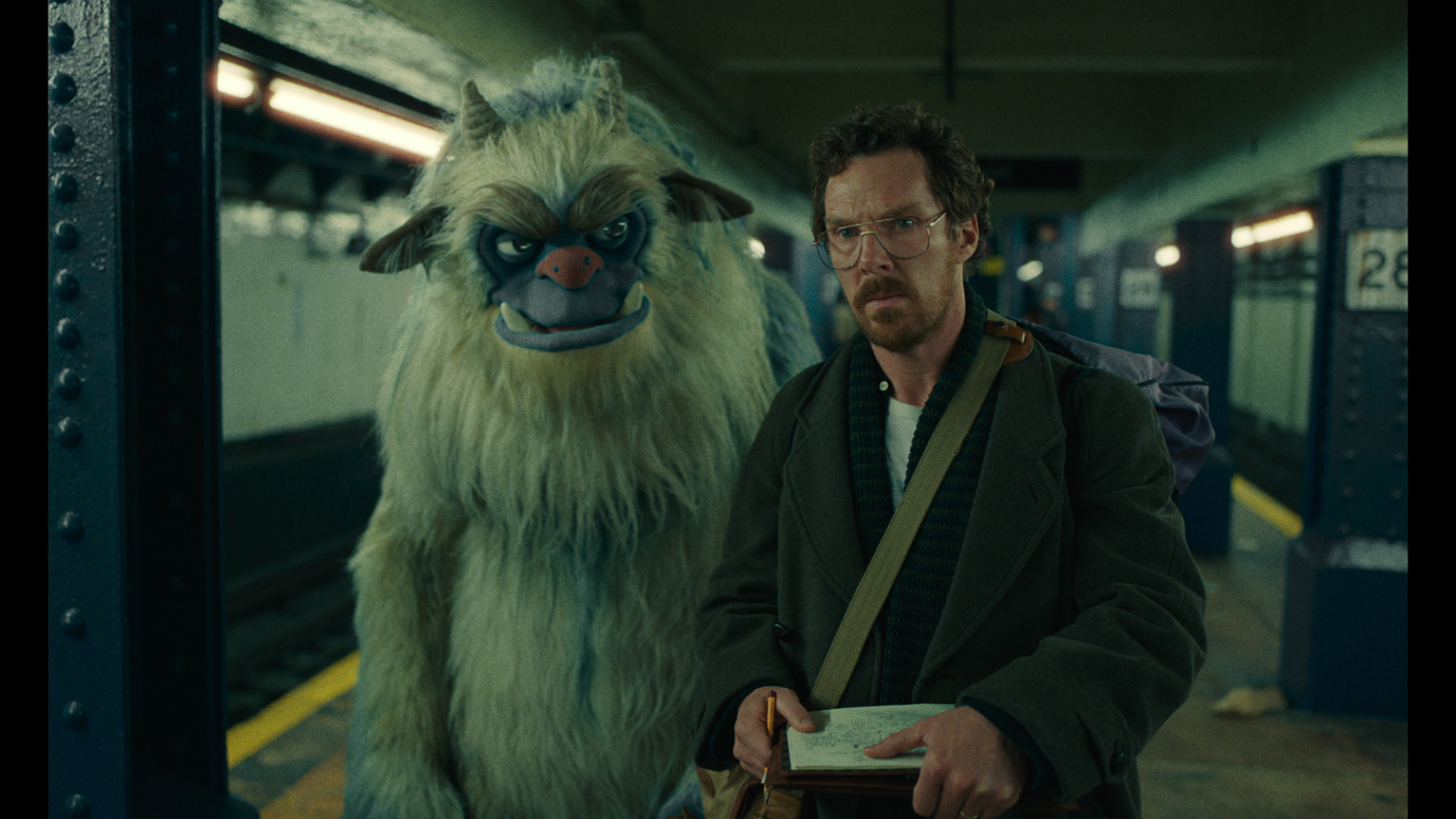
Morgan started with a simple idea: Can we live in a world where a kid can walk to school and come home safely? In exploring that question, the series weaves a lot of issues that plagued the city at the time: rising crime rates, a forgotten underclass, the AIDS epidemic, endemic racism, as well as government mismanagement and corruption.
“There were parallel themes that just became very apparent to me,” Morgan said during a press day with the cast in Los Angeles. “We’re looking at a world where the parents become children and the children become parents in some ways. And the notion of what is a family beyond the nuclear family of the Andersons? There’s a wider family of our city. Who looks after us in the city? Can we trust those parents — be that government, local council or our police force? And when those systems break down and expose themselves, where do we find our new boundaries of trust?”
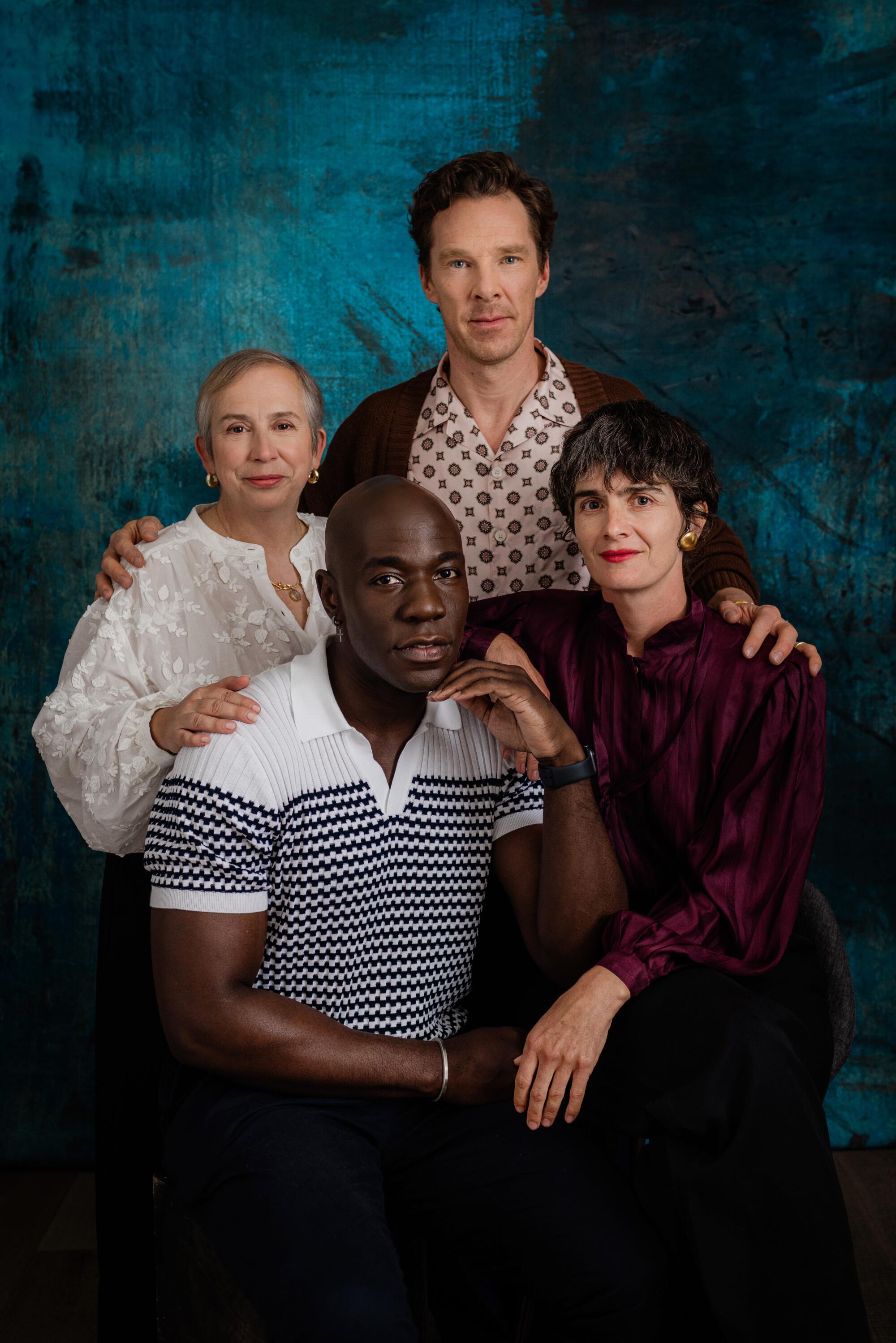
Morgan sees the show as a way for audiences to ask themselves those questions through Vincent’s journey. And the city’s many issues presented in the series, inspired by Morgan’s time spent in New York in the ‘80s, added another dimension to the inciting mystery. “There was this dark underbelly. It hadn’t had that cleanup,” she said. “There was something very particular about the ‘80s — it was a melting pot and a point of change, a point of shifting sands, filled with fear and hope, and moments of great freedom and moments of really pushing down that freedom. It felt like a really rich fabric and tapestry in which to set ‘Eric.’”
With no shortage of real and existential horror lurking outside, Morgan knew from the beginning she wanted to bridge the story with a space that provided safety and comfort. Influenced by her own childhood spent backstage with her theater director father, observing how sets were created and the way costumes came to life, she saw “Good Day Sunshine” as a contrast to the city’s roughness and a way to dig deeper into how Vincent, who begins the series already on shaky ground before his mental health declines further, copes with his reality.
“He’s trying to re-create his childhood and idealizing something that was less than ideal,” Cumberbatch said. “His mental health crisis was brushed under the carpet with pharmaceuticals and very cold, cut-off, loveless parenting ... he’s invested so much of himself in that show from a need that was never satisfied in his childhood.”
Morgan added that “Good Day Sunshine” is a world that Vincent can control, unlike his own, and that the puppets give life to his voices as he struggles with his mental health and alcoholism. It’s also a way to signal the value of pursuing a creative life, which stands in contrast to that of his estranged parents, particularly his father, a wealthy developer.
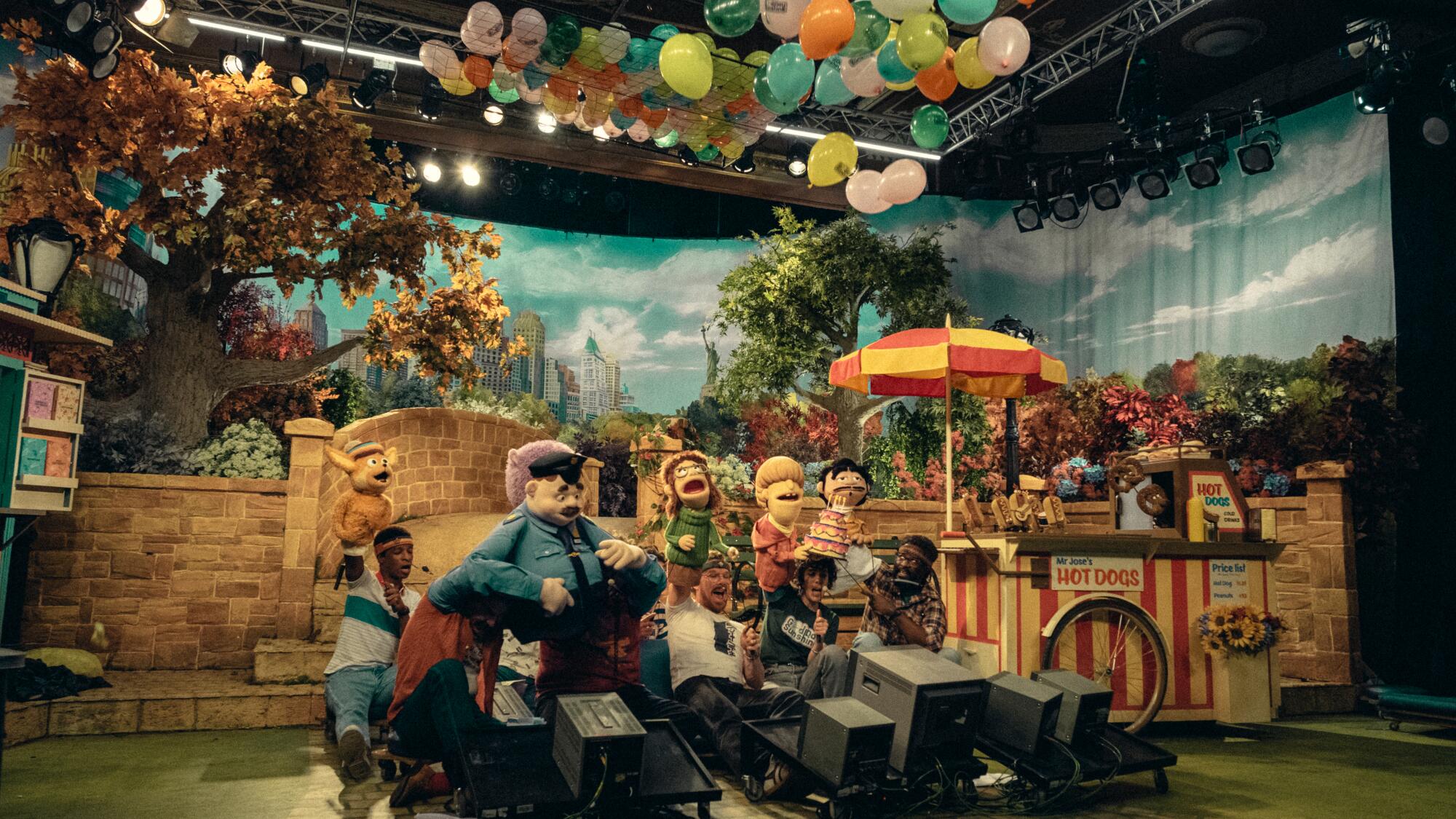
”That creativity is a way to liberate, heal, manage and help understand ourselves,” Morgan said. “Vincent’s desire to create a world of good, is probably one of the healthier things he has done.”
As a show within the show, “Good Day Sunshine” features an assortment of puppet characters — a mix of animals, inanimate objects and people — including one operated and voiced by Vincent, putting Cumberbatch’s chameleon voice work into practice (his eclectic credits include the dragon Smaug in “The Hobbit” trilogy and the Grinch in the eponymous 2018 animated film). Before he goes missing, Edgar observes his father at work from the sidelines and, later, watches as Vincent becomes agitated with notes from network bosses, demanding that the show broaden its appeal to get viewership numbers up, with a new puppet as a possible solution. On the subway ride home, Edgar suggests his idea for the puppet, Eric, to little fanfare from his dad.
Morgan credits series director Lucy Forbes with being a key architect behind the 7-foot monster puppet, which took roughly four weeks to perfect. Eric is a manifestation and an amalgamation of details in Edgar’s mind — a tail that mimics his cat and fur that matches the chevron of his grandmother’s mink. Vincent becomes convinced that bringing Eric to life could help bring Edgar back, and as he begins to mold the puppet from foam, Vincent also begins to hallucinate Eric, a manifestation of his inner voice, into existence in his quest to find the boy.
Cumberbatch felt the exploration of the imagined other — a device done before, including in films like “Harvey” (1950) and “Ted” — in the larger context of the story was intriguing. And bringing depth to the surreal is familiar territory for the actor, who has done green screen and motion-capture acting and understands the commitment required to make it believable. Still, as Cumberbatch tells it, acting opposite puppeteer Olly Taylor in a plush, furry costume as his character Vincent was falling apart was a surprisingly grounded experience.
“I’d often do line runs with Olly, who’s a really brilliant actor and incredibly capable puppeteer,” he said. “I tried the [Eric] voice out, I’d often read lines and sometimes not; he just got it and the rhythm was the only way it could be for Eric in that moment. It was all about trying to remind ourselves what the purpose of Eric was in relation to [Vincent’s] state of mind. At one point, I tried on the [puppet] headgear and I cried. I just had this wave of empathy for Olly and the performance he had to give in that contraption. It’s a miraculous skill.”
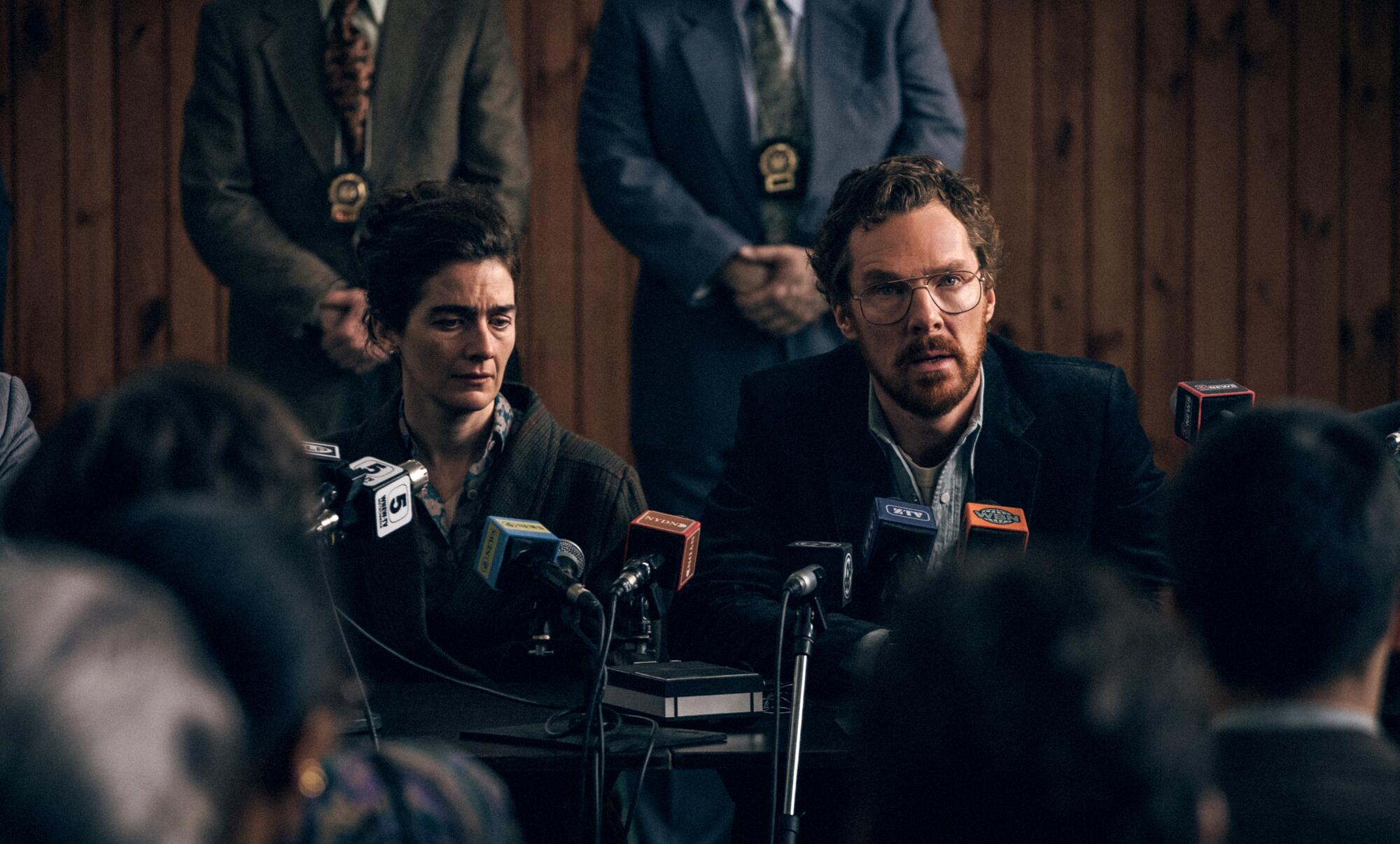
The puppet element helped soften some of the script elements for Hoffmann. As a mother of two children, the actor said she was initially hesitant about the heavy subject matter, but grew eager about its singular dynamic and the way the series explores the various breakdowns of systems, small and large. The series first captures the unraveling of a social institution — marriage — as Vincent and Cassie veer in opposite directions, and examines how their behavior negatively affects the parent-child dynamic.
“Vincent and Cassie are two very different people who are dealing with the world in two very different ways,” she said. “But I think that Cassie hasn’t been active in an honest way, on behalf of her son, for a while now — and on behalf of herself. I think that she knew that she needed to leave the marriage, and that it wasn’t a healthy environment for [Edgar]. As we come to find out, she has secrets and is in some denial. She’s not as deeply in it, and she’s not as avoidant and terrified of her emotions as Vincent is, or distracting herself with as many substances, but the disappearance... she definitely feels a sense of responsibility.”
When Morgan started to incorporate Ledroit into the story, she was determined not to make him a secondary character. She wanted Ledroit to go on his own journey, informed by his identity, and coming up against all the institutions — the precinct where he works or the gay nightclubs he used to visit — that are making him question his identity similar to Vincent. Playing a Black queer detective who is challenging the norm in the ‘80s, Belcher understood that sense of duty and purpose.
“In a story like this, it would be very easy for him to just turn into a cop that comes to work and deal with the information and solving the case. But it’s really exciting as a Black queer man, to show up with all the baggage that Ledroit would be carrying in the ‘80s, to wrestle with stuff, but to leave him in a place of action that is going to be the change.”
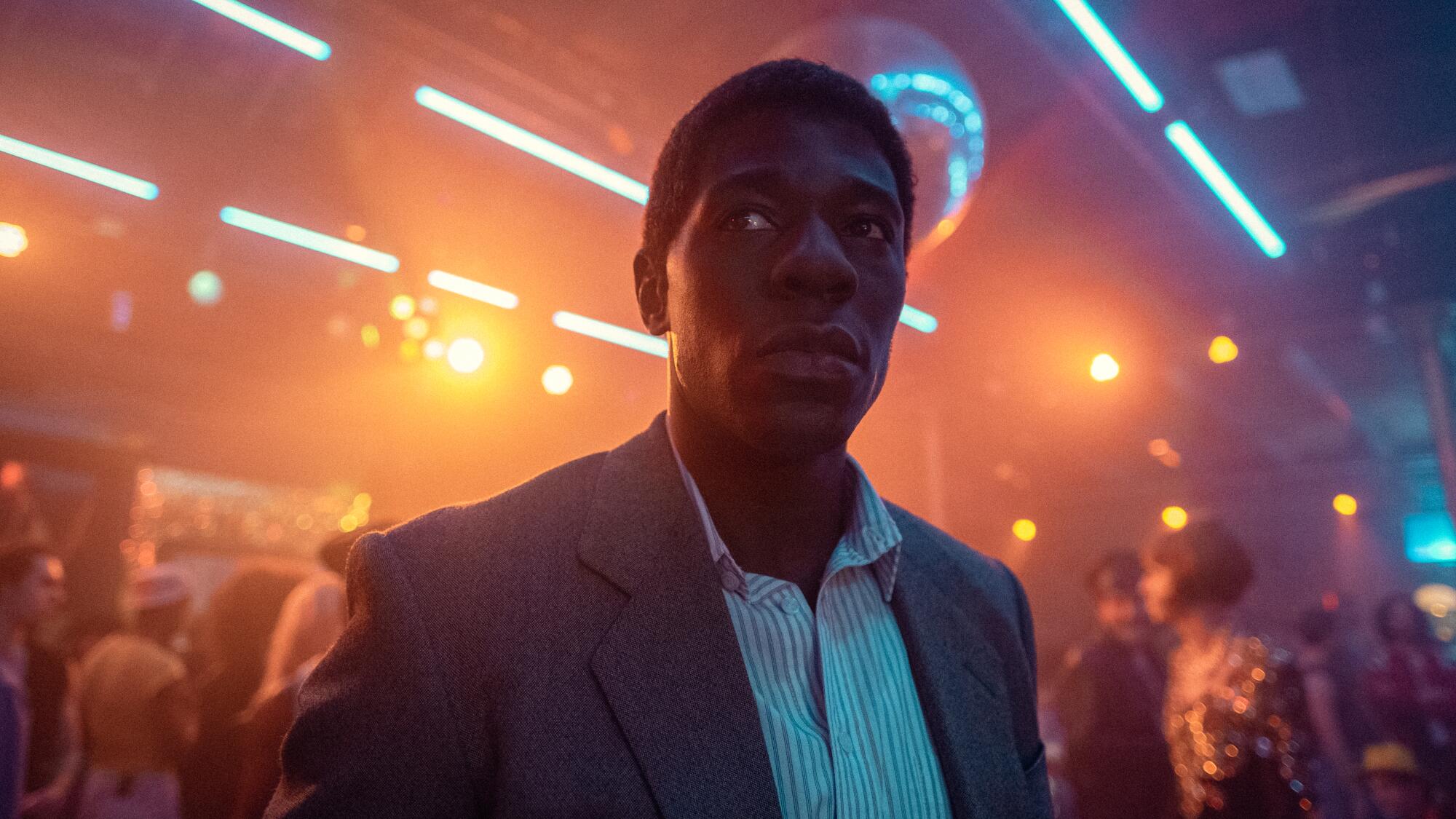
Belcher also acknowledged that though the Black community isn’t a monolith, they have a complicated relationship with law enforcement. He sees his character as an instrument of change within the institution.
“I think over the course of the six episodes, that’s a place he lands on: Oh, this is what’s required for us to do what we’re really here for. And it means I must call out injustice; it means I must be intolerant of corner cutting; it means I have to own who I am and stand firmly in that and stand up as a man and say ‘no,‘” he said.
The various threads in the series take some time to come together, making for a premise that can take some finesse in distilling. But that’s what the team behind the series hopes sets it apart.
“You felt held by an imagination that contained worlds within the worlds of the story,” Cumberbatch said. “It felt fresh and new — trying to explain it to people was interesting. I’ve never really heard of anything quite like this before.”
It’s why all these months later, cozy on a sofa with Hoffmann, Cumberbatch can’t help but chuckle wistfully while recalling a moment in the series that had him, as Vincent, wearing the fuzzy Eric costume and running through the streets.
“Running and running and running and running,” Cumberbatch said. “It’s the knife-edge thing with this drama; it is very f— funny, but also weirdly heroic and desperately sad and poignant.”
More to Read
The complete guide to home viewing
Get Screen Gab for everything about the TV shows and streaming movies everyone’s talking about.
You may occasionally receive promotional content from the Los Angeles Times.

